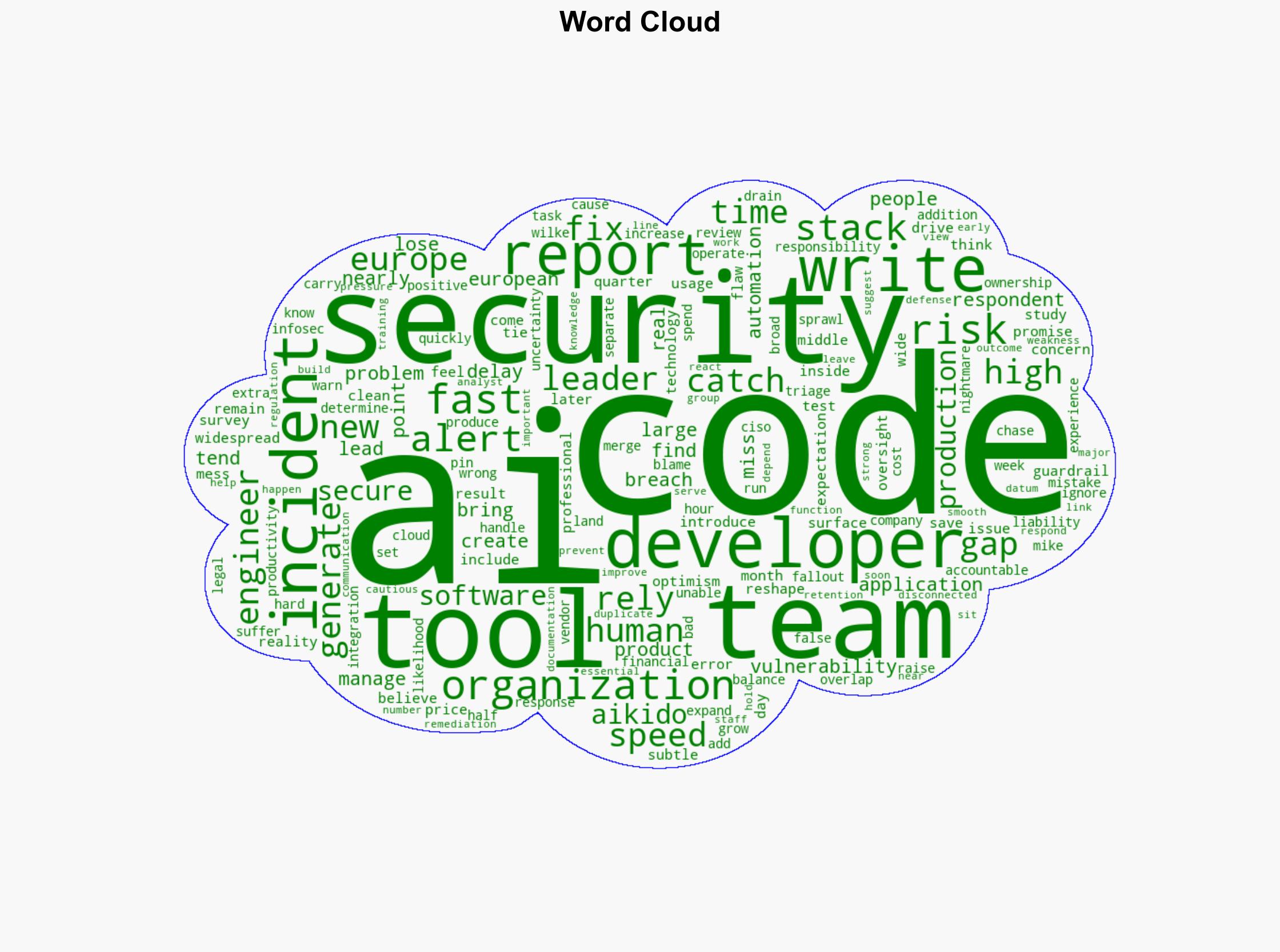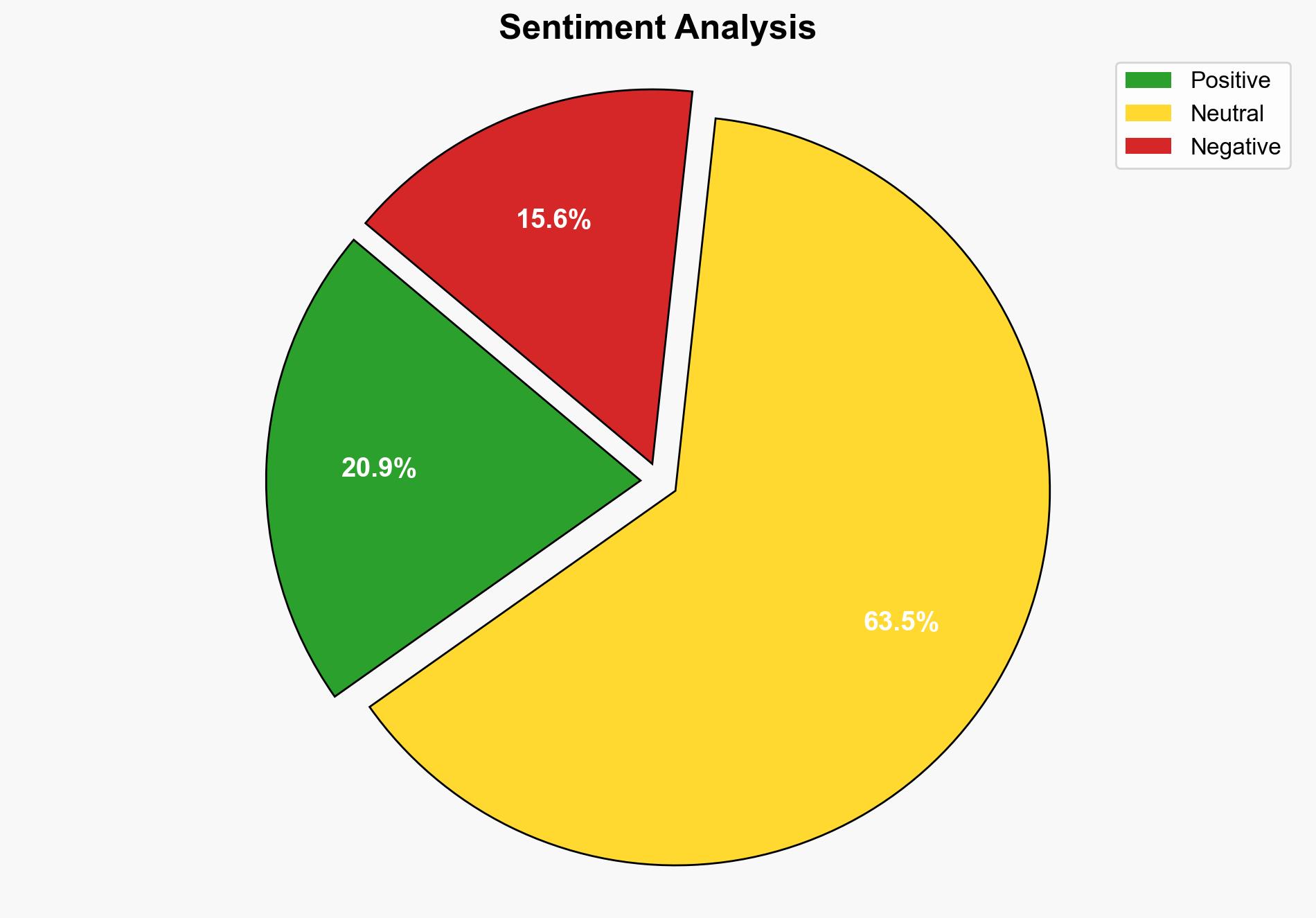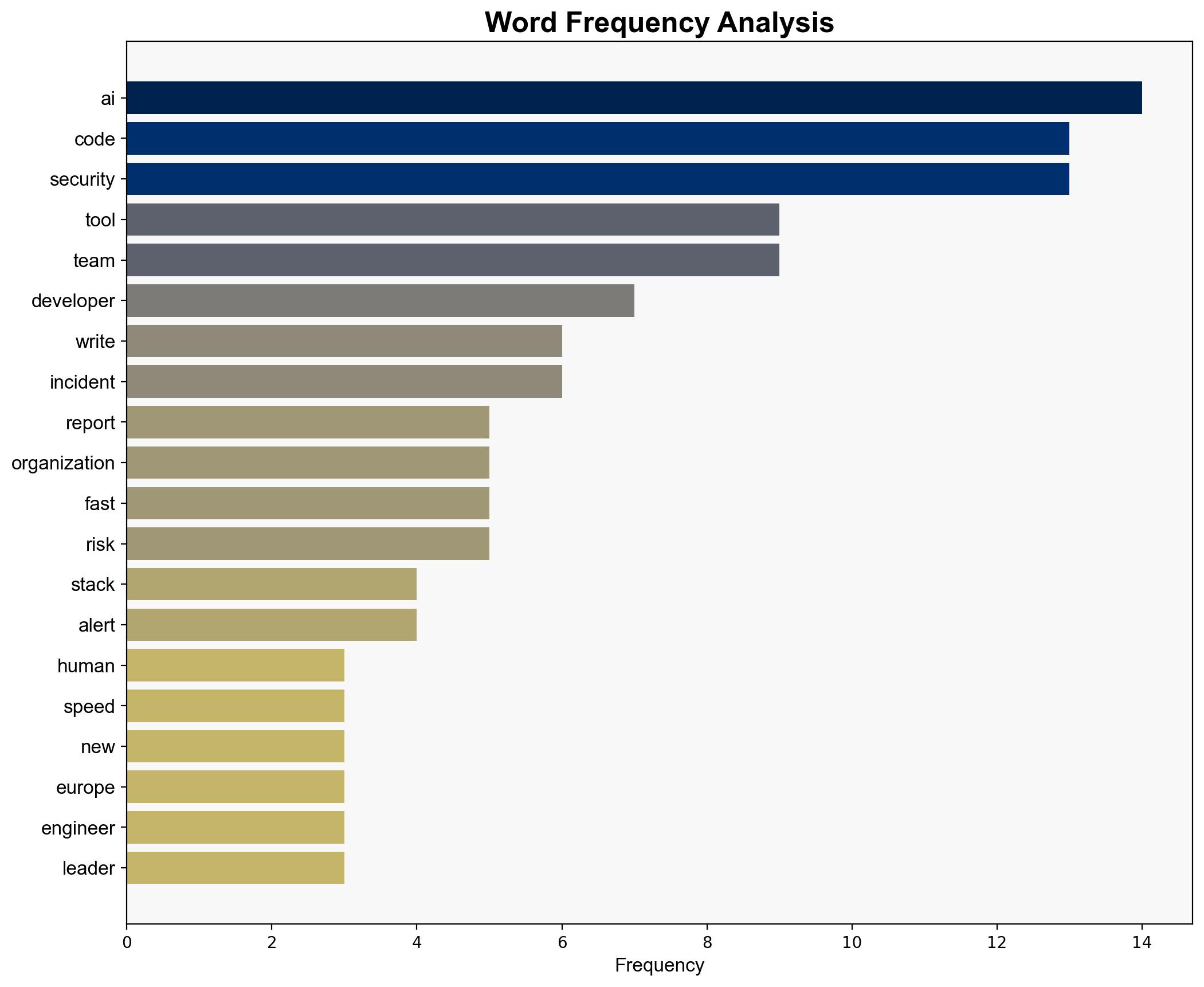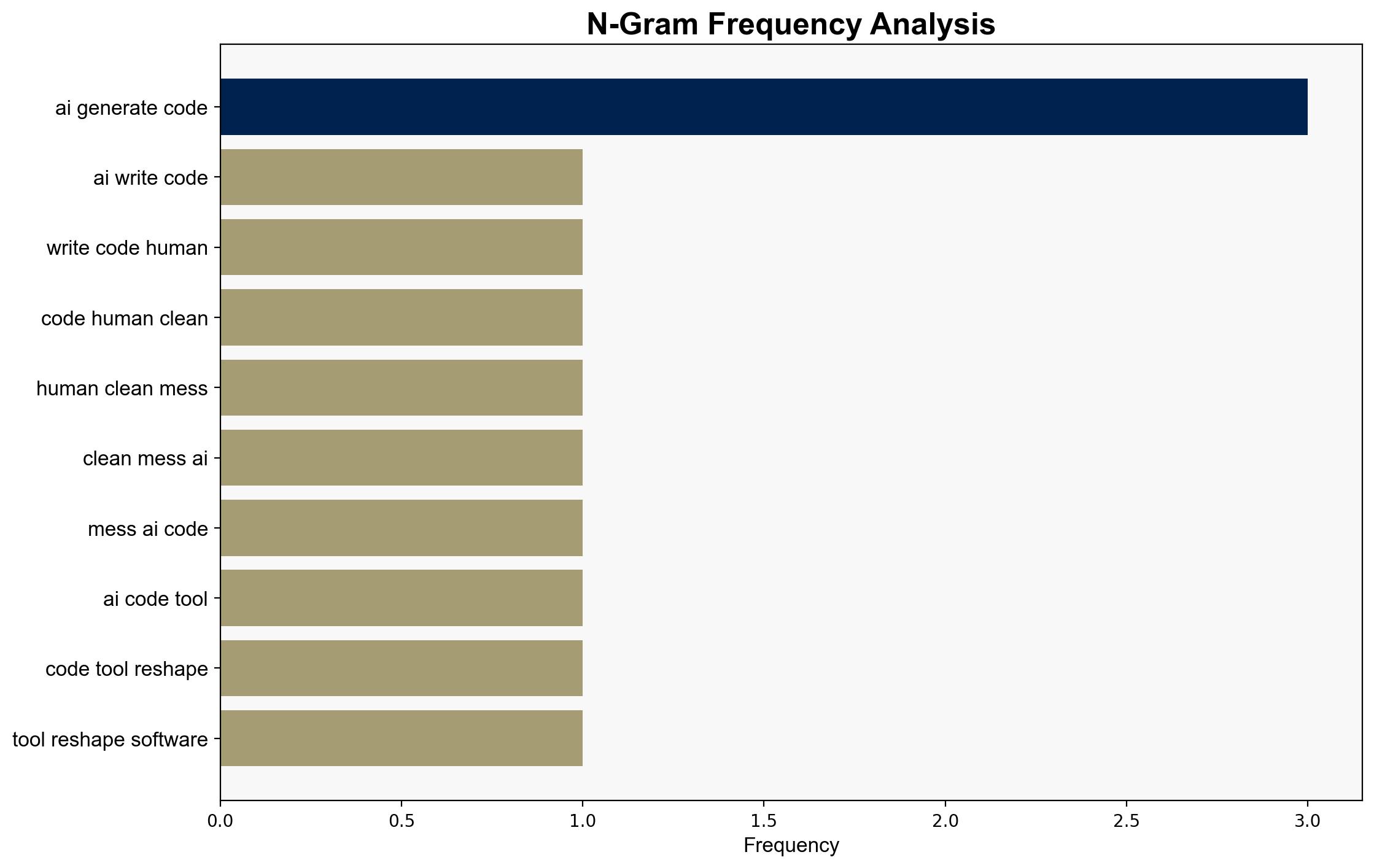When AI writes code humans clean up the mess – Help Net Security
Published on: 2025-10-24
Intelligence Report: When AI writes code humans clean up the mess – Help Net Security
1. BLUF (Bottom Line Up Front)
The integration of AI in software development presents significant security vulnerabilities due to rapid deployment and insufficient oversight. The hypothesis that AI-generated code introduces more risks than benefits is better supported. Confidence level: Moderate. Recommended action: Strengthen oversight mechanisms and enhance AI code review processes to mitigate emerging vulnerabilities.
2. Competing Hypotheses
Hypothesis 1: AI-generated code increases productivity and security by automating routine tasks, allowing human developers to focus on complex issues.
Hypothesis 2: AI-generated code introduces new vulnerabilities and security risks due to insufficient oversight and rapid deployment, leading to increased incidents and breaches.
Using ACH 2.0, Hypothesis 2 is more supported by the evidence. The report highlights incidents and vulnerabilities tied to AI-generated code, indicating a gap between AI capabilities and security requirements.
3. Key Assumptions and Red Flags
Assumptions:
– AI tools are assumed to be capable of writing secure code without human intervention.
– Security teams are expected to catch all vulnerabilities introduced by AI.
Red Flags:
– High optimism about AI capabilities despite evidence of security incidents.
– Over-reliance on AI tools without adequate human oversight.
– Disconnected tool stacks leading to integration challenges.
4. Implications and Strategic Risks
The rapid adoption of AI in coding could lead to widespread security vulnerabilities if not managed properly. Economic implications include potential financial losses from breaches and productivity losses due to false alerts. Cyber risks are heightened by fragmented toolsets and delayed responses. Geopolitically, countries with stringent regulations may have a competitive advantage in managing AI risks.
5. Recommendations and Outlook
- Implement comprehensive AI code review processes to ensure security standards are met.
- Enhance training for developers and security teams on AI tool usage and potential risks.
- Scenario Projections:
- Best Case: AI tools improve with enhanced oversight, reducing vulnerabilities and increasing productivity.
- Worst Case: AI-generated code leads to significant breaches, causing financial and reputational damage.
- Most Likely: Continued incidents due to oversight gaps, prompting regulatory interventions and improved practices.
6. Key Individuals and Entities
Mike Wilke, CISO at Aikido Security, is highlighted for his insights on the challenges of AI-generated code and security oversight.
7. Thematic Tags
national security threats, cybersecurity, AI integration, software development, regulatory compliance





